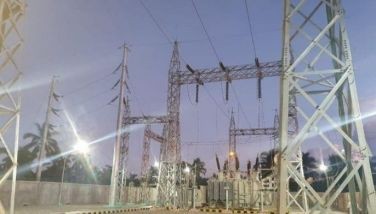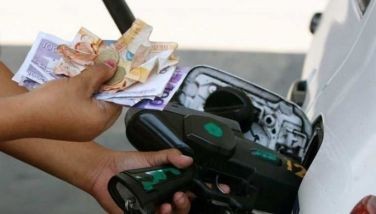The Philippine economy and COVID-19

The effect of coronavirus disease 2019 or COVID-19 on the Philippine economy for the rest of the year deserves attention.
The good prospects entertained for 2020 have been shattered by the onslaught of the pandemic, which required extreme measures that has put the economy to a halt.
Assessing the immediate future. What is in store as the government navigates what needs to be done? What are the main trade-offs and options that can be taken to restore and protect the economy?
Equally important are the programs for the long-term future. The Philippine economy has been on course to fire up its engines and that requires major economic reforms still.
Economic instability in the past, plus the failure to correct long-term defects in the investment climate, have produced insufficient dynamism.
The Asian Development Bank (ADB) commented recently on the Philippine economy in relation to the effects of the COVID-19 pandemic. It supposes that the Philippines “might shed more than four percent of GDP from a domestic COVID-19 outbreak, on top of a smaller two percent of GDP impact coming from global spillovers.”
“Risks are tilted to the downside,” the ADB report said. “The main downside risk to GDP (gross domestic product) growth in 2020 comes from COVID-19 and is, therefore, highly unpredictable. The impact on the economy will be larger than currently assumed if the global outbreak is prolonged beyond the first half, or if there is a sustained prolonged local transmission in the Philippines,”
Four plus two is six. The economic growth target for the year is in fact at least six percent per the economic development plan. This almost means wiping out any growth for the year.
However, the ADB leans toward the optimistic because growth could be restored in the second half of the year through helpful government interventions. It foresees a two percent economic growth rate for 2020.
The government economic response. The government’s economic response was to cover the needs of the extreme medical measurers which could last three months.
Congress enacted in a special session additional powers to enable the President to manage the new crisis. This is Republic Act 11469 known as “Bayanihan to Heal as One Act.” The law gives the President the power to reallocate and to reprogram P275 billion (or 62 percent) of the already approved P438 billion budget for 2020.
Mainly, this is to enable the government to deal with the budgetary needs of providing a wide social protection network for the citizenry and to pursue the fight against the pandemic.
The steps taken will provide subsidies to those deprived of income resulting from loss of work due to the lockdown measures of government. The money is intended to replace the wages they would have earned in employment. It also includes some supplements for the targeted Pantawid program to help very poor families due to the COVID-19 crisis.
In short, the subsidy is like “helicopter money” to help those who have lost purchasing power arising from the lockdown measures.
If implemented quickly and in a timely manner for those in need, the measure would make up for lost demand (or purchasing power) in the economy.
In addition, the law would allow the government to temporarily take over or direct the operations of public utilities and privately owned health facilities, including the distribution and storage of medical relief during the public emergency.
The inevitable impact of the lockdown measures was to create dislocation of the economy. Much more than amelioration of the economic conditions, is the need to protect the economy to restore economic activity and to resume growth. Demand needs to be restored and the sinews of the economy have to flex somehow.
With many developing countries facing the prospects of a deep recession , the Philippines could further turn to institutions that will assist in weathering the storm. The government could take advantage of the facilities that multilateral global institutions are offering to mitigate the impact of COVID-19 and help restore economic growth.
The IMF and the World Bank, and other development banks are devising programs to help those challenged by the pandemic.
Government economic managers are studying how, with the assistance of these institutions, the path toward growth might be helped. The government has to adopt important fiscal and monetary policies to help restore the path of growth.
Finance Secretary Carlos Dominguez is studying the preparation of such programs to improve the economy’s recovery. Much more needs to be known, he says, on the nature of economic support from the assistance programs.
The COVID-19 pandemic, however, has changed the outlook for many economies. For the Philippines, the threat would likely be centered on a weakening Balance of Payments position that has to be propped up . Or a respite must be provided while the rise of government spending and the fall of revenues has weakened the fiscal position of the government.
In such cases, support from the external institutions would be justified. Such support would also strengthen the economy’s recovery.
Such programs would make it possible to continue the Build Build Build programs of infrastructure expenditure. These major projects could be finished more quickly if the government had much more support from multilateral lending institutions.
Economic crises as reform opportunity. Let’s not forget the adage that economic crisis often makes difficult reforms. This takes wise, insightful and persuasive leadership. Hopefully the crisis makes possible the overcoming of obstacles that prevent good reforms from taking place.
Still missing, in my view, are improvements in the country’s program of attracting more investments in the country. The passage of the following reforms would immensely help the cause of rapid development: (1) Passage of the TRAIN 2 dealing with investment incentives, the component of reform addressing investment incentives.(2) The reform of labor laws. And (3) The amendment of the restrictive economic provisions in the Constitution.
My email is: [email protected]. For archives of previous Crossroads essays, go to: https://www.philstar.com/authors/1336383/gerardo-p-sicat. Visit this site for more information, feedback and commentary: http://econ.upd.edu.p h/gpsicat/
- Latest
- Trending

























